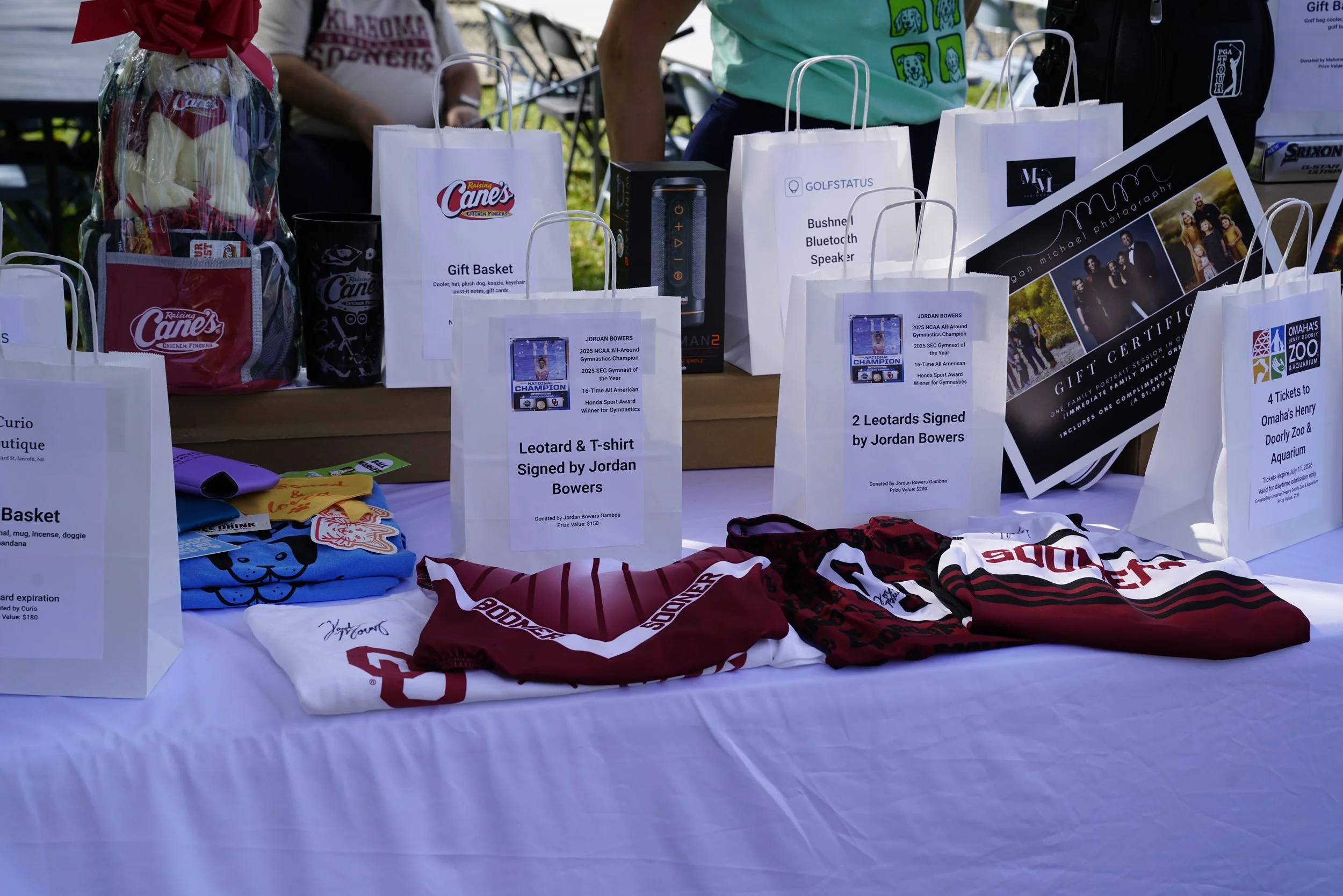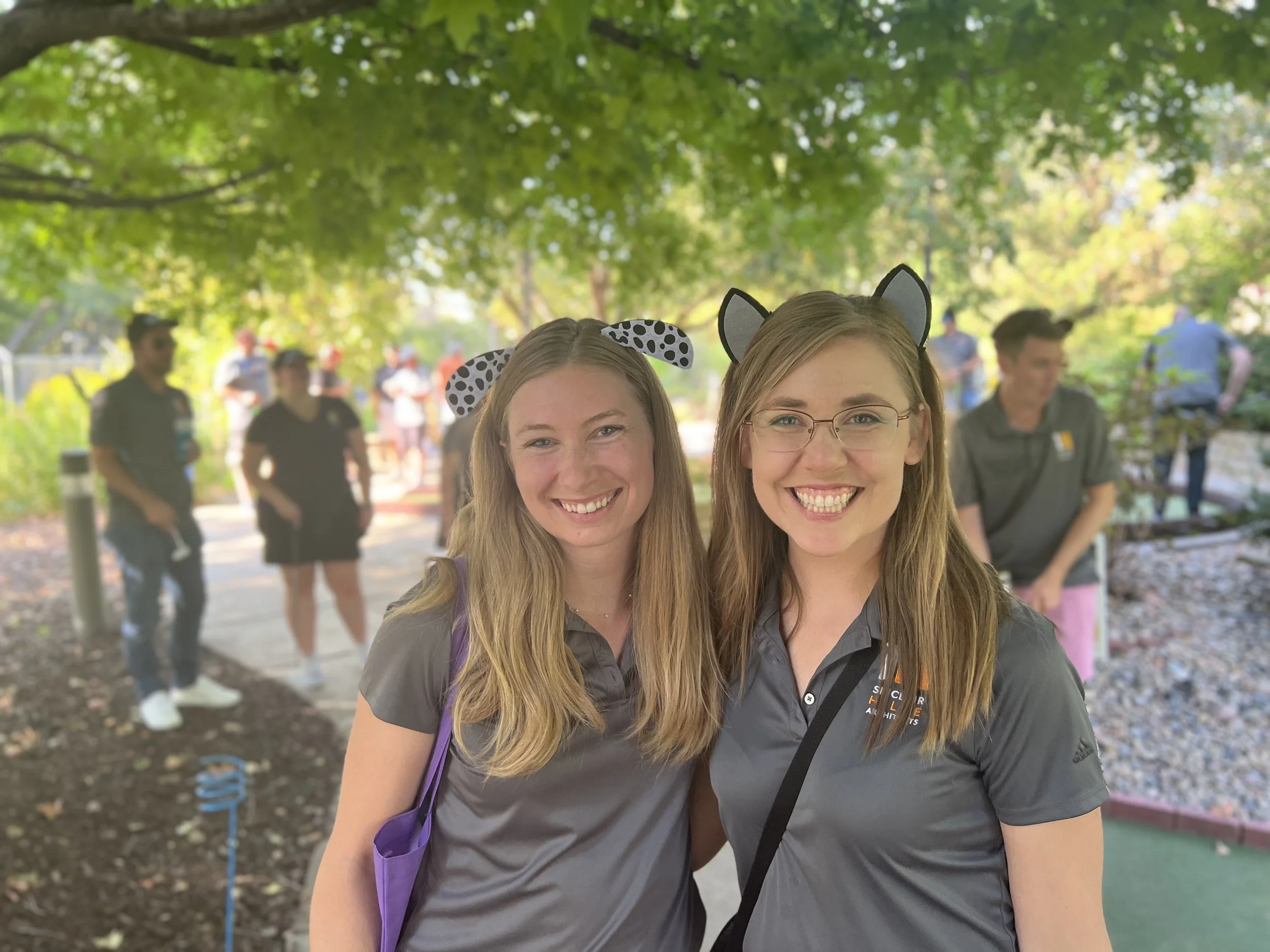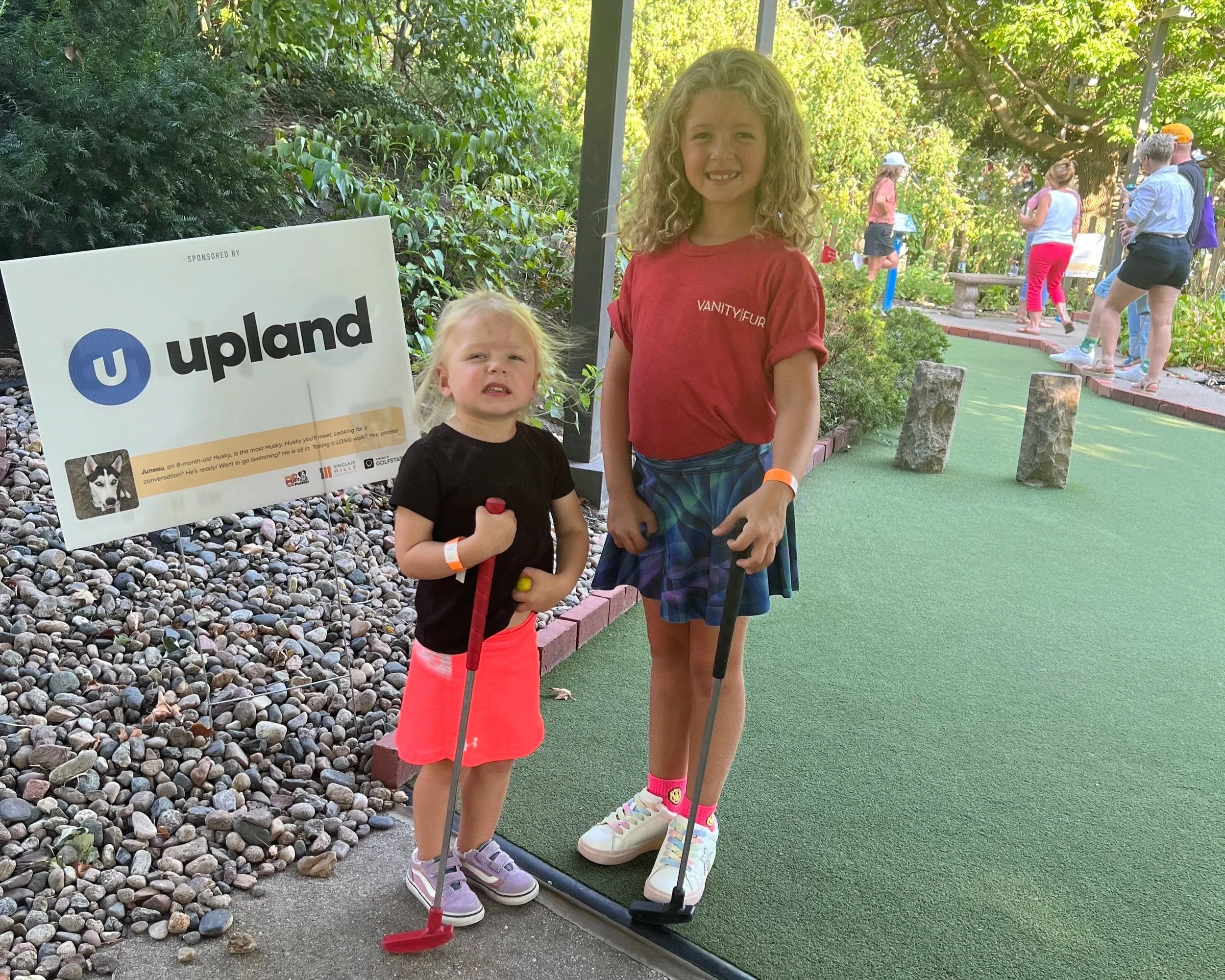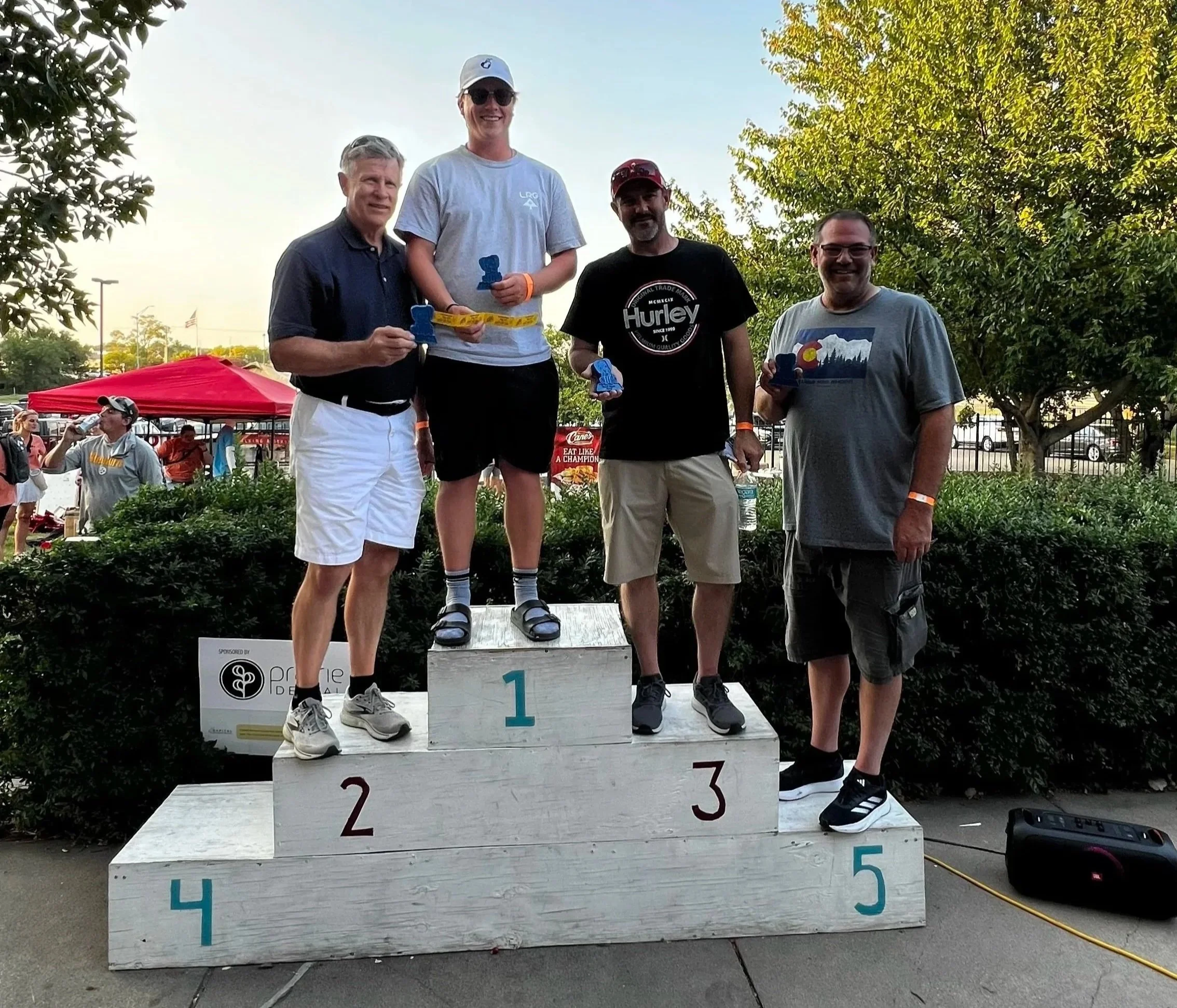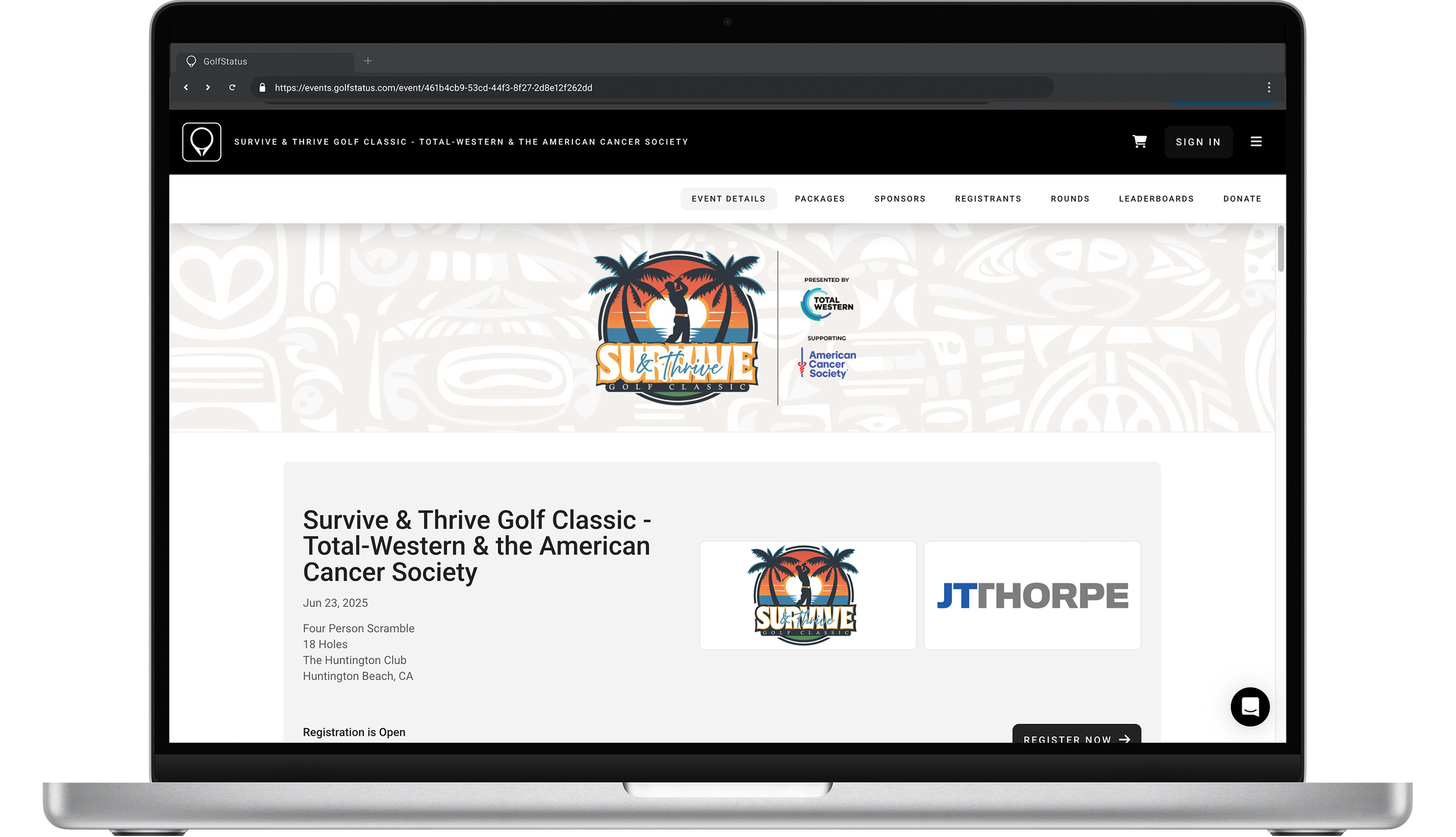by Jen Wemhoff, Communications Manager at GolfStatus
Prizes shouldn’t be an afterthought at your charity golf tournament. They’re more than just giveaways—they’re an opportunity to spark excitement, drive registrations, increase sponsor visibility, and boost additional fundraising revenue from the event. The right mix of prizes can elevate your tournament from a fun day of golf into a memorable experience that helps keep players and sponsors coming back year after year.
Your golf event’s prizes have the potential to do more than simply recognize winners.
This guide will answer common questions about golf event prizes, share 30 prize ideas that you can incorporate into your next golf fundraiser, and offer tips on how to choose, source, and present prizes effectively. Whether you’re launching a brand new tournament or building on years of success, looking for budget-friendly options or big-ticket items, or anywhere in between, your golf event prizes can have a lasting impact
FAQs About Golf Event Prizes
Why Should We Offer Golf Event Prizes?
Prizes have the potential to play a bigger role than just simply rewarding winners. They can impact participation, engagement, and fundraising results. Here’s why they matter:
Boost participation. Attractive prizes encourage more golfers to register and more sponsors to sign on to support the event (especially if their sponsorship includes a team).
Drive fundraising revenue. Tournament add-ons like raffles, auctions, and contests that are tied to prizes create extra income beyond registration fees and sponsorships.
Enhance the experience. Prizes keep the day engaging, fun, and exciting from start to finish.
Show appreciation. Prizes and awards recognize players, sponsors, and volunteers, reinforcing goodwill and loyalty to your organization.
Differentiate your event. Unique or high-value prizes set your tournament apart, making it more memorable year after year.
How Many Prizes Should a Golf Event Have?
You’ll want to strike a balance between quality and quantity, with a variety of prizes for different tournament components. Plan for a balanced mix of prizes that includes:
One or two marquee prizes, such as a grand prize for the tournament’s winner, as well as hole-in-one contest prizes.
A handful of prizes for on-course contests, like closest to the pin, putting, or longest drive contests.
Smaller prizes for on-course games or challenges, which can be as simple as taking strokes off their score for certain holes, a closer tee off position, raffle tickets, or drink tickets.
Several raffle prizes or auction items at different value levels to keep everyone engaged.
Every golfer should receive a player gift of some sort as a token of appreciation for their support of your nonprofit through the event, but there’s no need to ensure everyone gets an additional prize.
Securing in-kind donations from sponsors, businesses, and supporters to use as raffle prizes is a great way to maximize value and raise more money.
Where Should We Get Golf Event Prizes?
Prizes don’t have to stretch your budget. In-kind donations are a great way to maximize value and keep costs as low as possible. Connect with your networks to request in-kind donations for prizes:
Sponsors. Offer logo placement, shoutouts, and recognition in exchange for prize donations.
Local businesses. Restaurants, breweries, shops, and service providers often appreciate the visibility of an in-kind donation, particularly if they turned you down for a financial sponsorship.
Supporters and donors. Encourage board members or loyal donors to contribute experiences, products, or even connections.
PRO TIP: Package several smaller items together, such as a coffee shop gift card and branded coffee mugs or a golf towel, divot fixer, and golf balls, to create raffle bundles with more perceived value.
FREE GUIDE
Golf Tournament Sponsorships: Businesses to Target & How to Win Their Support
Learn how to use your networks to sell golf tournament sponsorships! Get ideas for building a prospect list, top business categories to target, pitch strategies that work, and more in this free guide.
30 Golf Event Prize Ideas
Get inspiration for your next golf event with these 30 prize ideas, organized by categories to help you plan.
Golf Event Prizes for Player Participation & Swag
Everyone loves a great keepsake! These prizes are great for golfer gift bags or participation prizes, as well as sponsor brand exposure.
1. Branded golf balls
2. High-quality golf gloves
3. Reusable water bottles or tumblers
4. Branded golf hats or visors
5. Branded golf towels
Hole-in-One Prizes
Nothing excites golfers quite like the chance to win a great prize in a hole-in-one contest. Make sure your nonprofit isn’t on the hook to cover the cost of the prize if someone gets an ace by securing hole-in-one insurance.
6. $10,000 cash prize
8. Luxury vacation to a resort destination
9. New car or truck
10. Home entertainment package
Golf event prizes like a stay-and-play trip at a private destination club can help drive participation and excitement.
Golf Prizes for Contest Winners
Reward the golfers who shine on the course! Offer exciting prizes to those who win their flight, the entire tournament, or contests like longest drive, closest to the pin, or putting.
11. Cash prize
12. Rangefinder or GPS golf watch
13. Premium golf bag
14. Custom-engraved driver or putter
15. Pro shop gift certificates from the host golf facility
16. Personalized trophies or plaques
Golf Tournament Raffle Prizes
Raffles get everyone involved and are an excellent opportunity to drive additional revenue. Use your event website to sell raffle tickets ahead of time and on tournament day.
17. Restaurant or brewery gift cards
18. Spa or wellness packages
19. High-end headphones or portable speakers
20. Local attraction or experience passes
21. Concert or live event package
Golf Tournament Auction Prizes
Silent and live auctions can generate significant revenue, especially when you secure donated unique or high-value prizes.
22. Private destination golf trip
23. Signed sports memorabilia
24. Private golf lesson or clinic with a local pro
25. Gift baskets featuring local products
26. Box seats for a professional sporting event
Golf Tournament Awards for Donors and Sponsors
Prizes aren’t just for players. Recognizing the tournament’s sponsors and donors helps build lasting relationships. Consider personalized, thoughtful items that help them remember the event.
27. Engraved plaques or awards
28. Customized wine or whiskey bottles with event branding
29. High-quality event photos in branded frames
30. Signed or framed customized golf pin flags
A framed pin flag is a great way to recognize sponsors, donors, or winners.
Tips for Choosing & Presenting Prizes
Align prizes with your audience. A tournament made up of corporate sponsors may prefer high-end tech or luxury items, while a community event might lean more toward local experiences and family-friendly items.
Make prizes visible. Display raffle prizes and auction items prominently, share photos of prizes for tournament winners on the event website, and promote contest prizes on social media to build anticipation before and during the event.
Bundle creatively. Consider combining smaller item donations into themed packages. For example, a “Night Out” basket could include a gift card to a local restaurant, tickets to a concert, and a rideshare gift card.
Keep the awards ceremony lively. Plan for a fast-moving, engaging prize presentation that keeps participants excited instead of restless.
Final Thoughts
Golf event prizes can be a powerful tool to increase registrations, drive revenue, and create a memorable experience for participants and golfers alike. By curating a mix of participation swag, high-end contest rewards, raffle and auction prizes, you’ll set your tournament apart and strengthen your impact. With the right strategy, even modest prizes can make a big splash. Start sourcing prizes early, leverage in-kind donations, and focus on items that reflect your audience and mission.
About the Author
Jen Wemhoff - Communications Manager at GolfStatus
Jen Wemhoff accidentally discovered her passion for nonprofits in college. An internship while earning a degree in Communications from Doane University led to a 20 year career in the nonprofit sector, where she found a strong desire to be part of something bigger than herself. Her vast nonprofit experience includes roles in marketing, fundraising, and direct programming. When Jen came to GolfStatus as Communications Manager in 2020, she was struck by the power of the sport to raise money to power nonprofit missions. She tells GolfStatus’s story across platforms and channels and develops educational tools and resources to help nonprofits tap into golf’s giving power. Jen, her husband, and two daughters call Lincoln, Nebraska home.



